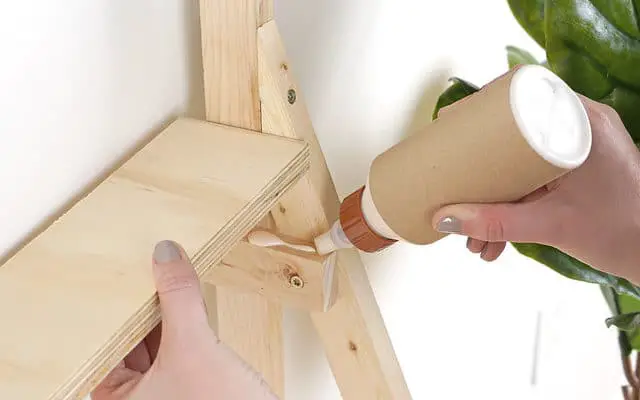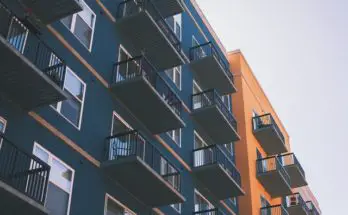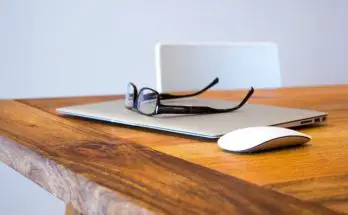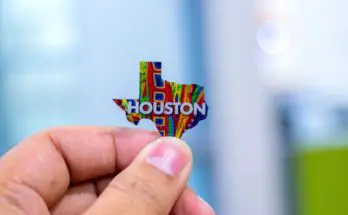Polyvinyl acetate or ‘PVA’ is one of the most commonly used and widely versatile types of glue that we use today. Colloquially known as carpenter’s glue, white glue, school glue, etcetera, it is also used for a huge array of other applications from bookbinding to drywall prep.
PVA has the benefit of remaining flexible post-cure, furthering its adaptability by spreading its usefulness to applications like paint base. PVA is found as an emulsion for sealing up cartons and bags, and even goes as far as to be used in chewing gum as a vehicle for the sugar or sweeteners.
A Brief History of PVA Glue
Polyvinyl acetate was first discovered by the German chemist Fritz Klatte in 1912. Klatte’s technique for transforming acetic acid and acetylene into the vinyl acetate monomer used to require the presence of mercury, but these days is carried out by adding acetic acid to ethylene, and the mercury has since been updated with a catalyst of palladium in its stead.
This widely deployable adhesive became paramount in the advancement of the methods we use in adhesion applications today.
The development of PVA bolstered safer and wider use of synthetic adhesives rather than eliminating natural resources by traditional glue production derived from hoof or hide. PVA products are prepared with the use of polyvinyl acetate emulsions which can then take their guise in the form of sealers, paint bases, and coatings.
What Materials Can It Be Used On?
PVA is commonly used for binding wood but is also used in many situations that require flexible durability and substantial longevity.
Designed specifically for application on porous surfaces, PVA is a poor choice for things like metals, glass, or plastics as it will not easily bond with materials lacking texture. If the glue cannot infiltrate the material, it cannot properly adhere.
Bookbinding and leather production are big fans of PVA as the glue bonds readily to both leather and paper, and its compound resists breaking down pH levels in the paper resulting in a prolonged whiteness of page.
PVA bonds decently to cloth though is not intended for it, and the fact that it is a durable, non-toxic adhesive makes it extremely popular for many in home applications. Kids love it for all sorts of hobbies as it holds very well to paper, cardboard, popsicle sticks and the like.
Pros & Cons of Using PVA Glue
PVA glue has its hits and misses, just as any other adhesive would have variable results on different materials, or under different environmental circumstances.
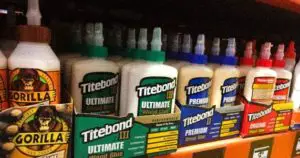 The major benefit of PVA glue is that it is an aliphatic polymer and doesn’t give off any fumes while wet, it is also inflammable making it perfect for indoor or workshop use. It is also skin-safe and poses no threat to the gloveless hobbyist.
The major benefit of PVA glue is that it is an aliphatic polymer and doesn’t give off any fumes while wet, it is also inflammable making it perfect for indoor or workshop use. It is also skin-safe and poses no threat to the gloveless hobbyist.
PVA can be very thick, or alternately thinned out with water for easier application. This feature makes the usefulness of PVA a touch greater than it would be if only available in one consistency. For the same reasons which make this glue dilutable, cleanup is super easy as the runs wipe away with water.
On the opposite side of dilution, you can also create a mix of PVA and sawdust which creates a thick filler for cracks or gaps.
PVA is good for its certain described tasks as long as it stays within its rated temperature range during application and setting. Different glues will have different ranges so be sure to keep an eye on that.
Unlike epoxy, PVA can unfortunately only bond to porous surfaces. It does well at its specific job within reason, but for more do-everything adhesives, you may want to look a bit further.
It is also important to note that although it is called a ‘glue’ it is imperative to make sure all workpieces stay clamped together until properly healed. Do not expect the glue to maintain any sort of shape or hold until it sets up properly.
How to Apply PVA Glue
To apply the glue, you can employ almost any type of applicator, as PVA is not dangerous and is water-soluble when wet. You can either apply your glue directly from a bottle, or you can smear it about using a tongue depressor or any other such item to create a more even coating.
Remember to only apply PVA to porous, non-sealed surfaces, and for extra adhesion feel free to score or mar the surface a bit for some extra little nooks and crannies the glue can grab onto.
Once applied, position the workpieces at their desired locale and clamp them in place. It is important to note that different types of PVA glue will have shorter or longer ‘open working’ times -meaning the maximum amount of time you want the wet glue exposed before assembly- and the time to set will vary as well.
A bunch of excess glue will squeeze out of any seams (which is what you want) and can then be easily wiped away with warm water and a rag. Once the overflow is wiped away, it’s as simple as letting it all dry.
For ultimate hold and prevention of slippage or movement of the workpieces while becoming tacky, it is highly recommended to use as many clamps as possible (within reason) to ensure proper and retained placement of the pieces, not removing the clamps until you are certain your work will hold its shape.
PVA glue heals faster in a slightly air-conditioned or room temp setting, though some can set at a slightly lower temperature. The reason for this is that PVA dries by the process of water both absorbing into the wood and evaporating out of the glue itself ultimately resulting in a set, solid-yet-flexible bond. Air-conditioning removes water from the atmosphere, therefore providing a better environment for proper setting, just make sure to keep the setting reasonably tepid.
The preferred shelf life of PVA is optimally one or two years due to the fact that many things can cause degradation such as; fungi, algae, bacteria, lichens, and yeasts. This can be stretched somewhat if you are very careful in its storage, so make sure to keep up on little tips and tricks from the pros.
In What Instances Should You Use It in Woodworking?
When using PVA glue for woodworking you need to make sure your glue fits your task. It is best when making things like furniture to use a type III glue, and only use PVA for an initial build. The reason for this is that previously glued wood is no longer porous, and PVA will not 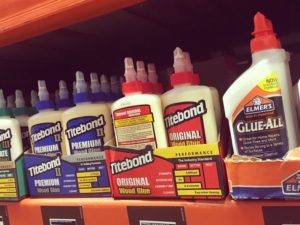 bond will to it, or any other dried glue. It is best to use hide glue for restoration as it does a much better job in this instance.
bond will to it, or any other dried glue. It is best to use hide glue for restoration as it does a much better job in this instance.
A type III glue will shrink down a good bit leaving clean seams and professional, sellable results but will offer nothing in the way of waterproofing. Type III for indoor pieces, type I or II for patio furniture, and either will flex under load enabling your work to last a long while.
When working on bigger projects around the house, again for finer interior work a type III should do the trick. PVA types I and II will work best for jobs outside as they have a better water resistance rating and can usually set at a lower temperature if necessary.
Can It Be Used Outdoors or in High Moisture Areas?
PVA glue is best applied in drier climates, or when water can be separated from the air. Moist conditions may hinder the drying process as the glue is easily water-soluble when wet ultimately causing a prolonged drying time, and possibly a weaker bond.
As stated, there are three types of PVA wood glue, so choose wisely for the project at hand. The three types of PVA glue are creatively titled types; I, II, and III. This rating is given according to waterproofness rather than strength, and all of them have roughly the same holding capacity (~4,000 lbs).
Type one is waterproof, II is resistant, and type III is not meant for water resistance. Type III contains more water than the other two types of glue, so when it cures it will shrink down more, making it less visible and great for details like fine interior woodwork, cabinetry, or anything similar.
Types I and II are made up of longer polymer chains which is what allows the glue to essentially ‘knit’ itself together forming a more watertight barrier -much better employed for outdoor use.
No matter which PVA glue you select for your application, do not apply it while it is humid or raining outside as this will ruin the integrity of the glue.
The most popular PVA glue on the market today is made by Titebond which you can find for a great price on Amazon by clicking here. Titeboond makes their glue in both types I, II and III.
Is PVA Glue The Same As Elmer’s Glue
A common misconception is that Elmer’s glue and PVA wood glue are the same. Elmer’s glue is a form of PVA glue, but it is not the same. Elmer’s glue is made up of different polymers that cause it to have a different makeup than what you find in normal PVA woodworking glue.

